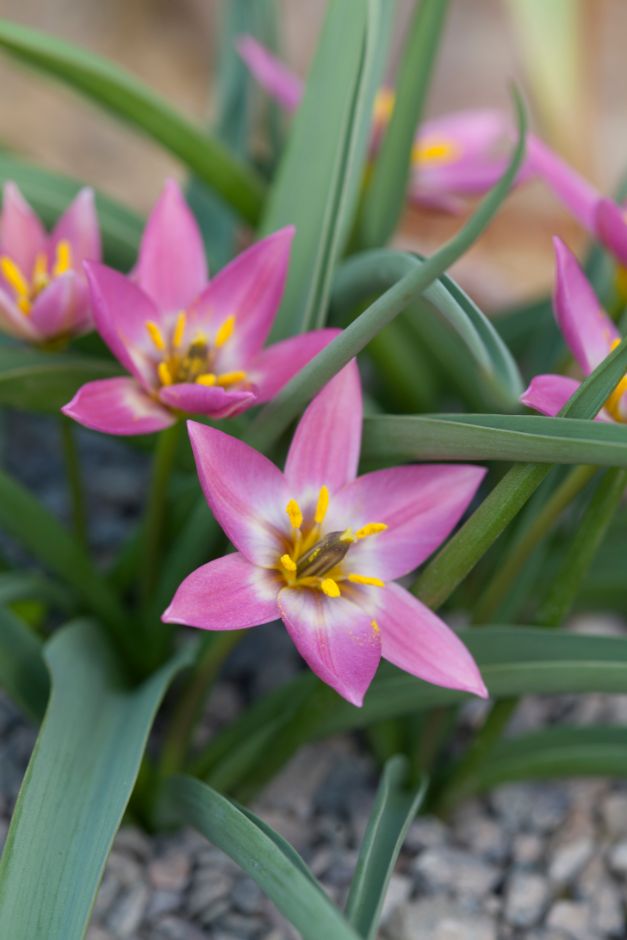Tulipa humilis (15)
low-growing tulip
A very variable species, a bulbous perennial up to 25cm high with two to five linear glaucous leaves, up to 15cm long, and star-shaped flowers, up to 7cm across, in early spring and mid-spring. The tepals may vary from very pale pink to very dark purplish-pink, and are often tinged grey-green outside, with yellow, olive-green, or blue-black basal marks, edged with yellow or white. The stamens have yellow or purple filaments and yellow, brown, purple or black anthers

Buy this plant
Size
Ultimate height
0.1–0.5 metresTime to ultimate height
2–5 yearsUltimate spread
0.1–0.5 metresGrowing conditions
Moisture
Well–drainedpH
Alkaline, NeutralColour & scent
| Stem | Flower | Foliage | Fruit | |
| Spring | Pink Purple | Blue Green | ||
|---|---|---|---|---|
| Summer | ||||
| Autumn | ||||
| Winter |
Position
- Full sun
Aspect
South–facing or West–facing or East–facing
Exposure
ShelteredDrought resistance
Yes Hardiness
H5Botanical details
- Family
- Liliaceae
- Native to GB / Ireland
- No
- Foliage
- Deciduous
- Habit
- Clump forming
- Potentially harmful
- Harmful if eaten, skin allergen. Wear gloves and other protective equipment when handling. Pets: Harmful if eaten, skin allergen - for further information and contact numbers regarding pets, see the HTA guide to potentially harmful plants
- Genus
Tulipa are bulbous perennials with characteristic flowers, in a wide range of colours, in spring
- Name status
Correct
- Horticultural Group
- Miscellaneous tulips include all species and hybrids not otherwise classified
- Plant range
- E Turkey, N Iran, Caucasus
How to grow
Cultivation
Plant 15-20cm deep from mid-autumn to late autumn in a rock garden or in containers, in fertile, preferably neutral or alkaline soil that is free-draining but also able to hold moisture when the bulbs are in full growth, in full sun and with shelter from strong winds; in summer, remove old yellow foliage, and keep soil dry; for more advice, see tulip cultivation
Propagation
Propagate by seed, sown in containers in a cold greenhouse or frame in autumn (it may take 4-7 years for flowers to be produced) or by division of offsets, re-planting the larger bulbs and growing on the smaller bulbs in a nursery bed, or by bulb propagation
Suggested planting locations and garden types
- City and courtyard gardens
- Cottage and informal garden
- Rock garden
- Gravel garden
- Patio and container plants
- Cut flowers
- Flower borders and beds
Pruning
No pruning required
Pests
May be susceptible to slugs, aphids and stem and bulb eelworm; squirrels may eat the bulbs
Diseases
May be susceptible to tulip fire disease, tulip grey bulb rot, and virus diseases; bulbs in storage may be susceptible to blue mould
Get involved
The Royal Horticultural Society is the UK’s leading gardening charity. We aim to enrich everyone’s life through plants, and make the UK a greener and more beautiful place.